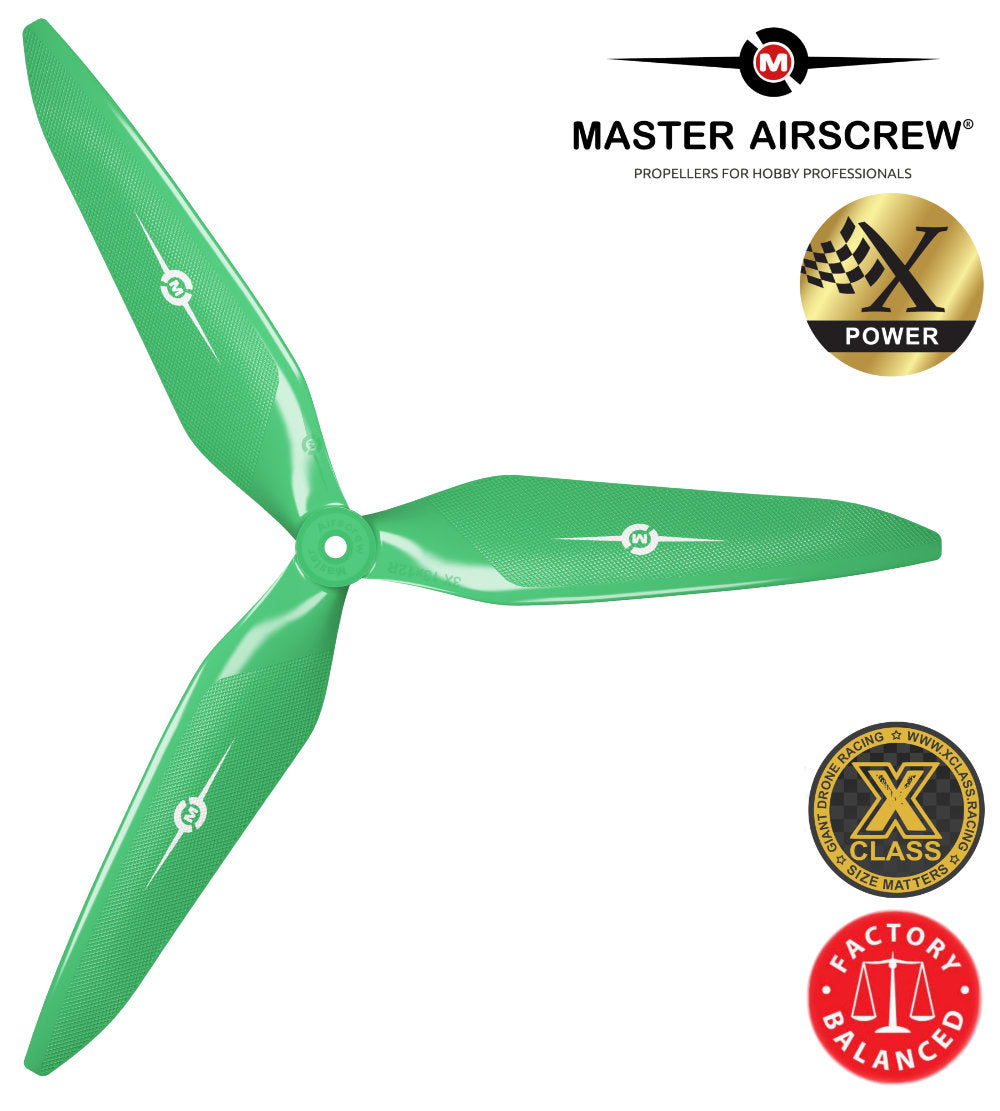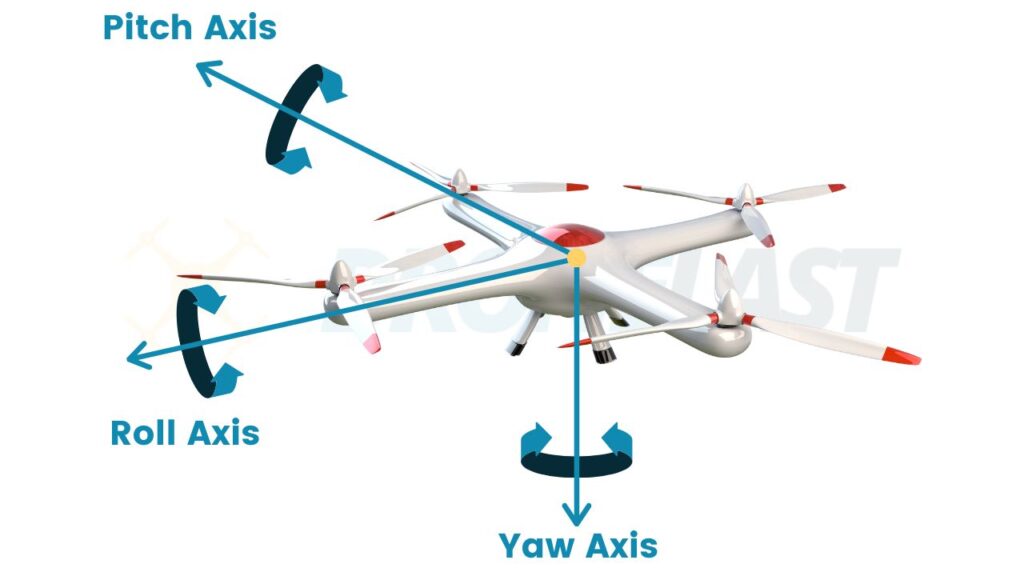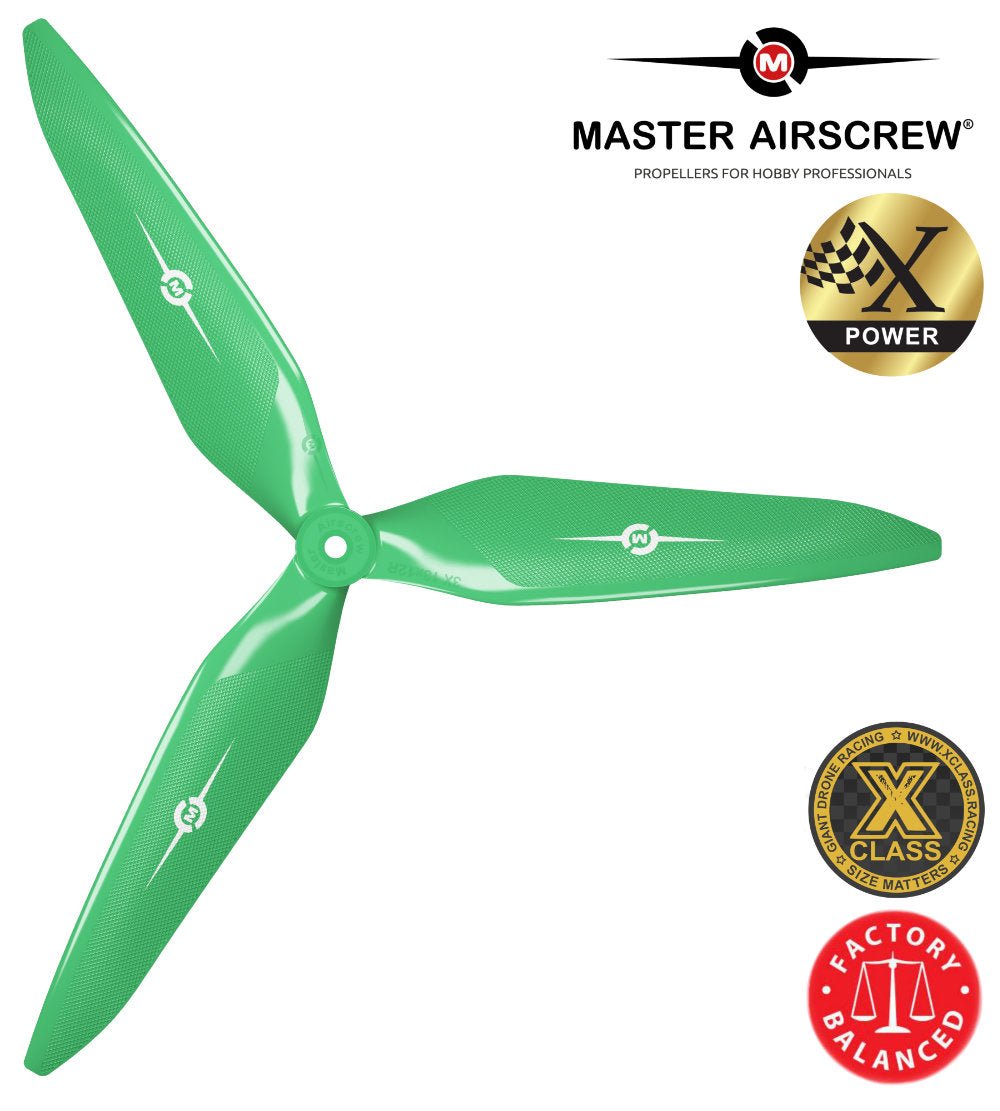Importance of Drone Propellers
When you think about drones, you might picture the sleek bodies, high-definition cameras, or impressive flight landscapes. However, one of the most crucial components often overlooked is the propeller. Just like the wheels on a car determine how smoothly it rides, drone propellers significantly influence how well your drone performs. Drone propellers are not just spinning blades; they generate thrust, stabilize the drone in the air, and manage its agility during flight. This makes them essential for achieving optimal performance and maneuverability. Without the right propellers, even the most advanced drone can suffer from poor handling and reduced battery life. Consider this: if you’ve ever piloted a drone and noticed it struggling to gain altitude or respond sluggishly to your commands, the issue might lie in its propellers. The right propellers can maximize the drone’s efficiency, allowing you to capture stunning aerial images or navigate through complex environments with ease. Whether you are a hobbyist or a professional aerial photographer, knowing how important your drone’s propellers are is vital for elevating your flight experience.
Factors Impacting Performance
Numerous factors come into play when assessing the performance of drone propellers, and understanding these elements will help you make informed choices. Here are some of the most significant considerations:
Propeller Size
Larger propellers can lift heavier loads and provide better stability, while smaller propellers are generally more efficient and offer faster response times. For example, my friend recently made the switch to larger propellers to fly his heavy-laden photography drone. The difference was astonishing; he could soar higher and capture broader landscapes without a hitch!
Pitch
Pitch refers to the angle of the propeller blades, impacting how much air they move with each rotation. Higher-pitched propellers provide more thrust but may decrease efficiency, whereas lower-pitched ones are typically more efficient at slower speeds. Choosing the right pitch can affect how your drone handles in various conditions. Understanding pitch is critical, especially if you’re flying in windy conditions; you want those blades to propel you efficiently!
Material
The material from which propellers are made can also impact their performance. While plastic propellers are affordable and light, they may not withstand the rigors of intense flying sessions. Carbon fiber propellers, on the other hand, offer increased durability and efficiency, albeit at a higher cost. Personally, I’ve switched to carbon fiber propellers for my racing drone, and the enhanced performance is worth every penny!
Weight
The overall weight of a drone directly affects its flight duration and stabilization. Heavier drones with lightweight propellers may lack lift capability, making them struggle to maintain altitude. During one of my flying sessions, I noticed that transferring to a lighter battery not only improved my overall flight time but also allowed my drone to glide smoothly in the sky. Weight distribution should always be a factor in your drone design considerations.
Blades Configuration
Most standard drones have two-blade propellers, but there are also three or four-blade configurations. More blades can mean more lift, but they can also cause increased drag. If you’re looking for speed and agility, you might favor a two-blade design. For those who prioritize stability, a four-blade configuration could be the better option, especially in gusty conditions.
Environmental Conditions
Weather conditions play a huge role in drone performance. Factors like wind speed, humidity, and temperature can significantly affect how your drone’s propellers perform. During one of my outdoor shoots, I learned this lesson the hard way: a sudden gust of wind caused my drone to wobble uncontrollably due to the improper propeller choice. Always check the forecast before flying, especially to assess wind conditions, which can directly impact your drone’s stability.
Conclusion
In summary, understanding the importance of drone propellers and the various factors that impact their performance is essential for every drone pilot. The right propellers can make all the difference, transforming your drone’s capabilities and elevating your flying experience. Whether you’re capturing breathtaking aerial shots or racing through the skies, keep in mind how propeller size, pitch, material, configuration, weight, and environmental conditions affect your drone. By making informed choices, you can ensure your drone operates at its best and gives you that exhilarating feeling of flight you craved. Aspiring drone pilots need to grasp these fundamentals as they embark on their flying adventures. It’s a world where science intersects with creativity, and propellers are at the heart of that experience! Happy flying! 🛩️

Types of Drone Propellers
Now that you’ve grasped the significance of drone propellers and the critical factors influencing their performance, it’s essential to dive into the various types of drone propellers available. Each type is designed for specific applications, so understanding their differences will make a significant difference in your flying experience.
2-Blade Propellers
The most common option you’ll encounter is the two-blade propeller. These are lightweight, provide good efficiency at high speeds, and offer a decent amount of thrust.
- Pros:
- Lightweight and versatile
- More efficient in speed-oriented applications
- Easier to handle
- Cons:
- Less lift compared to multi-blade options
- May struggle in windy conditions
I remember once switching my racing drone from a four-blade setup to a two-blade configuration for an upcoming race. The response time was noticeably faster, and I could navigate tight corners with more agility. However, I had to be extra cautious about the wind conditions!
3-Blade Propellers
Three-blade propellers strike a balance between performance and stability. They provide more lift than their two-blade counterparts, making them ideal for drones carrying extra payloads, like cameras or sensors.
- Pros:
- Better lift and stability compared to two-blade propellers
- Suitable for drones carrying significant payloads
- Cons:
- Slightly heavier, which can reduce efficiency
- Higher drag might be an issue in speed-focused scenarios
When I upgraded my drone’s camera for a more extensive shoot, I opted for three-blade propellers. They made a world of difference in stabilizing my drone, especially when dealing with heavy equipment.
4-Blade Propellers
Four-blade propellers provide excellent stability and lift, making them a perfect choice for aerial photography or videography drones. They are particularly useful in windy conditions as they can maintain a smooth flight path.
- Pros:
- Enhanced stability for aerial photography
- Better performance in windy environments
- Cons:
- Increased weight might affect battery life
- Greater drag can lead to lower speeds
I once witnessed a mesmerizing sunset through the lens of my drone. The four-blade configuration allowed me to hold the camera steady, capturing stunning shots without any blurring. It was a game changer for creating cinematic footage!
Material Considerations
Now that we’ve delved into the types of propellers, let’s focus on the materials that construct these essential components. The material can significantly impact the durability, efficiency, and overall performance of the propellers.
Plastic Propellers
Plastic propellers are often the go-to choice for novice drone pilots or those on a budget. They are lightweight and cost-effective, but they come with their own set of pros and cons.
- Pros:
- Affordable and widely available
- Good for casual flying and beginners
- Easy to replace
- Cons:
- Less durable, prone to bending or breaking
- Can produce vibrations, affecting flight stability
I used plastic propellers when I first got my drone. They served me well during my initial flights, but after a few crashes—a common rite of passage—I started to notice the wear. For novice pilots, it’s essential to weigh the pros and cons before making a decision.
Carbon Fiber Propellers
Carbon fiber propellers are a favorite among serious drone enthusiasts and professionals due to their superior durability and performance. They offer a great compromise between weight and strength.
- Pros:
- Highly durable, can withstand more damage
- Greater efficiency and lift potential
- Reduced vibrations, leading to smoother flights
- Cons:
- Higher initial cost
- Less forgiving in crashes; if they break, they often do so dramatically
After gaining more experience, I decided to transition to carbon fiber propellers for my photography drone. The stabilization during long shoots improved immensely; it was a worthwhile investment! Just be mindful that while they provide incredible performance, they don’t always bounce back from tough landings.
Nylon Propellers
Nylon propellers offer a middle ground between plastic and carbon fiber options. They are generally more durable than plastic propellers but not as strong as carbon fiber, making them an excellent choice for hybrid users.
- Pros:
- Enhanced strength compared to plastic propellers
- More affordable than carbon fiber
- Cons:
- Can still warp under high-stress scenarios
- Less efficient at high speeds
When I wanted something tough but cost-effective for my racing drone, I found a set of nylon propellers that fit the bill perfectly. They handled the aggressive flying style while still being easy on the wallet.
Conclusion
Choosing the right type and material of propeller significantly influences your drone’s performance, handling, and overall flying experience. Each type—whether it’s the lightweight two-blade, stable three-blade, or sturdy four-blade—comes with unique advantages tailored to specific use cases. Moreover, the choice of material can enhance durability and flight quality, so think carefully about what you’re willing to invest. Embrace the diversity of options available in the realm of drone propellers to find the perfect match for your piloting style and flying needs! It’s this journey of exploration and experimentation that ultimately leads to the most exhilarating flight experiences. Happy flying! 🚀

Choosing the Right Drone Propeller
Now that you’ve grasped the basics of drone propellers and the various types and materials, it’s time to delve into the nuances of selecting the right propeller for your specific needs. It’s not just about picking a random set off the shelf; you want to consider size, pitch, and of course, some essential maintenance practices to ensure your drone flies smoothly and efficiently.
Size and Pitch Selection
When determining the right size and pitch for your drone’s propellers, it’s like fitting shoes: you want to ensure the size matches your needs without being too tight or too loose.
Propeller Size
The size of your propeller typically refers to its diameter, which directly impacts thrust and performance. A larger diameter can create more lift, making it easier to carry heavier payloads. However, it also means increased resistance and reduced speed.
- Larger Propellers (e.g., 10-15 inches):
- Benefits: More lift and stability; ideal for heavy-lifting drones used in aerial photography or surveying.
- Drawbacks: Can limit agility and increase energy consumption, leading to shorter flight times.
- Smaller Propellers (e.g., 5-9 inches):
- Benefits: Greater agility and faster speeds; suitable for racing or drone agility tasks.
- Drawbacks: Less lift and stability; might struggle to carry additional loads.
I remember upgrading my drone for photography applications, and after some research, I ended up selecting larger 12-inch propellers. They provided the added lift I needed to stabilize my camera rig. Initially, I was nervous about how they would affect maneuverability, but to my surprise, they performed exceptionally well for shooting steady footage!
Propeller Pitch
Pitch refers to the angle of the blade and significantly influences how much air the propeller can displace with each rotation, thus affecting thrust and efficiency. It’s generally classified into two categories: high-pitch and low-pitch.
- High-Pitch Propellers:
- Generate more thrust for fast forward flight but may reduce efficiency and control at lower speeds.
- Good for racing drones or when rapid acceleration is required.
- Low-Pitch Propellers:
- Offer increased efficiency and better control at slower speeds.
- Ideal for aerial photography, where stability is a priority.
One time, I experimented with a set of high-pitch propellers on my racing drone. It was exhilarating at first, but as soon as I attempted tight corners, I quickly realized they made control difficult. I swapped them out for lower-pitch options and found my drone more manageable and stable, keeping it steady during those critical racing moments!
Balancing and Maintenance Tips
Choosing the right propeller size and pitch is vital, but you also need to consider balancing and maintenance. A well-balanced propeller not only improves flight efficiency but also maximizes the drone’s lifespan.
Balancing Your Propellers
An imbalanced propeller can lead to vibrations that negatively affect the drone’s performance and can even cause damage over time. To ensure your propellers are balanced, follow these steps:
- Visual Inspection: Check for any dings, dents, or other physical deformities. Even minor issues can affect performance.
- Use a Propeller Balancer: If you have a propeller balancer, it’s a quick and effective tool to assess balance.
- Place the propeller horizontally on the balancer.
- If one side hangs lower, that side is heavier. You can gently file down the heavier side or add weights to achieve balance.
- Test Flight: After balancing, conduct a test flight. If you notice unusual vibrations or sounds, rebalance or replace the propellers as needed.
In my early days of flying, I neglected to balance my props and faced shaky footage during an important shoot. After that, I invested in a simple propeller balancer, and it worked wonders! A smooth flight means not only better video quality but also enhanced drone life.
Maintenance Tips
Proper maintenance of your drone propellers not only extends their lifespan but also ensures safe and efficient operation. Here are a few essential tips to keep in mind:
- Routine Checks: Frequently inspect your propellers for wear and tear, especially after a crash or rough landing. This should include checking for cracks, warping, or dull edges.
- Cleanliness: Keep your propellers clean. Dirt, debris, or residue can throw off the balance and lead to performance issues.
- Use a soft cloth to wipe them down and a brush to remove stubborn dirt.
- Regular Replacement: Don’t hesitate to replace worn-out or damaged propellers. It’s an easy fix that can have a significant impact on performance. As a baseline, consider replacing them every 20-25 flights, depending on usage and wear.
- Storage: Store your propellers in a safe, dry place when not in use. Avoid leaving them in direct sunlight or high temperatures, as this can warp or fade them over time.
By following these maintenance tips, you’ll ensure that your drone performs at its best, flight after flight. I’ll never forget how a small maintenance session saved my drone from a mid-air failure, followed by a painful crash!
Conclusion
Choosing the right drone propeller involves understanding size and pitch selection while mastering maintenance and balancing techniques. Each component plays a crucial role in tailoring your drone’s performance to fit your flying style and goals. Consider how larger, high-pitch options might benefit you for high-speed racing, while stable, low-pitch choices could enhance your aerial photography experience. Don’t overlook the significance of propeller maintenance and balancing; it’s an essential part of ensuring your drone flies smoothly and reliably. With a thoughtful approach to selecting and caring for your drone propellers, you can elevate your flying experience and enjoy countless successful flights. Get out there, make informed choices, and happy flying! 🛩️✨

Performance Enhancement Techniques
With a solid understanding of choosing and maintaining drone propellers, it’s time to delve into performance enhancement techniques. Elevating your drone’s capabilities not only makes flying more enjoyable but also opens doors to new possibilities, whether you’re capturing breathtaking video footage or racing against the clock. Two of the most effective methods for enhancing performance are upgrading propellers and adjusting blade angles. Let’s explore each of these techniques in detail.
Upgrading Propellers
Upgrading your drone’s propellers can be one of the most impactful changes you can make to boost its performance. The right propeller can improve lift, stability, and efficiency, depending on your specific flight needs.
Why Upgrade?
Here’s why you might consider upgrading your propellers:
- Increased Efficiency: Higher-quality materials, like carbon fiber, can reduce weight and increase thrust.
- Enhanced Stability: Better-designed propellers can stabilize your drone, particularly during adverse weather conditions.
- Improved Flight Time: Advanced propellers often lead to better battery efficiency, allowing for longer flight durations.
Selecting the Right Upgrade
When contemplating an upgrade, be clear about your goals. Here are some considerations:
- Intended Use:
- Aerial Photography: Look for larger, lower-pitch propellers that provide stability and can carry extra payloads without compromising lift.
- Racing: Opt for smaller, high-pitch propellers that can give you that edge in speed and agility.
- Performance Constraints: Understand your drone’s compatibility with new propellers. Always check the manufacturer’s guidelines for size and pitch to avoid performance issues.
- Testing and Feedback: After applying an upgrade, take your drone for a test flight. Take notes on its responsiveness, stability, and flight duration. This practice has been invaluable for me—after upgrading to a pair of high-efficiency propellers, the noticeable difference in stability during my photography sessions was worth every penny spent.
Personal Experience
I once upgraded the propellers on my workhorse drone, which I primarily used for capturing landscapes. I switched from standard plastic to carbon fiber propellers. The difference was staggering. Not only did I gain substantial lift, but my footage became smoother than ever, reducing post-editing work. The investment paid off, allowing me to explore new angles and techniques without worrying about flight stability.
Adjusting Blade Angles
In addition to upgrading propellers, adjusting blade angles can fine-tune your drone’s performance. Blade angle affects the amount of air push created with each rotation, influencing lift and thrust.
Understanding Blade Angles
The blade angle refers to the pitch angle of the propeller blades. A few points to consider:
- Positive Pitch: Increasing the angle (or pitch) of the blades results in more lift and thrust but can require more energy, which can drain the battery faster.
- Negative Pitch: Decreasing the pitch helps improve efficiency and speed but may reduce lift, especially with heavier payloads.
How to Adjust Blade Angles
- Adjusting Factory Settings: Many drones allow users to set their autopilot as per desired behaviors, enabling you to adjust for various flying styles. Familiarize yourself with your drone’s firmware and adjustment capabilities.
- Using Advanced Controllers: Some advanced drone controllers let you dial in specific angles. If you’re into fine-tuning your drone’s capabilities, it’s worth investing in one—especially if you often switch between tasks, like aerial photography and racing.
- Trial and Error: Don’t hesitate to experiment with different settings. Each minor adjustment can yield different results. Take your drone out for a dedicated test flight after making changes, and observe how it responds. This is an exhilarating process where you find the sweet spot that feels just right.
Real-World Application
When I first got into drone racing, I struggled with maneuverability and stability at fast speeds. After some research, I started adjusting blade angles by slightly increasing the pitch using an advanced controller. The minor adjustment dramatically improved my drone’s responsiveness during sharp turns. While it did consume more battery, the thrill of enhanced precision and speed in racing made it worthwhile, giving me the competitive edge I craved.
Monitoring Performance Changes
After you’ve upgraded your propellers and fine-tuned the blade angles, it’s essential to monitor how these changes affect your overall flying experience. Keep a log of test flights with your observations:
- Flight speed
- Battery life
- Stability during maneuvers
- Any unexpected behaviors, such as wobbling or erratic movements
By analyzing these metrics over time, you can refine your choices and continue to enhance your drone’s performance effectively.
Conclusion
Performance enhancement techniques, like upgrading propellers and adjusting blade angles, can significantly elevate your drone flying experiences. With thoughtful upgrades and precise adjustments, you can unlock new capabilities, whether it’s capturing stunning visuals during peaceful flights or shaving seconds off your race times. Don’t hesitate to experiment with your drone. The journey of learning what works best can make every flight exhilarating and rewarding. Begin your enhancements today, and unlock the full potential of your drone! Happy flying! 🛩️✨

Safety Measures and Best Practices
As you embark on your drone adventures, ensuring that you’re equipped with safety measures and best practices is paramount. Drones are remarkable devices offering endless opportunities for creativity and exploration, but they can pose risks if not handled properly. Here, we’ll discuss essential tips for safe flying and vital maintenance and inspection guidelines to keep your drone in top shape.
Tips for Safe Flying
Flying your drone should be an exhilarating experience filled with wonder, yet safety must always come first. Whether you’re just starting or you’re an experienced pilot, these guidelines will enhance your flying experience and keep those around you safe.
1. Know the Rules and Regulations
Before you take off, familiarize yourself with local laws regarding drone flying. Each country often has specific regulations, including no-fly zones, altitude restrictions, and privacy laws.
- Research Local Laws: Check national aviation authority websites for rules.
- Join Local Clubs: Connecting with other drone enthusiasts can be beneficial. They often know the specific regulations in your area.
A couple of years back, I flew in a new city without realizing I was near an airport. Thankfully a local pilot informed me just in time! It reinforced the importance of understanding regulations before flying.
2. Pre-Flight Checklist
Establishing a routine before each flight will help ensure that you’re ready to go when it’s time to launch. Here’s a handy checklist:
- Inspect the Drone:
- Check for physical damage, especially to propellers.
- Look over battery health and ensure it’s charged adequately.
- Firmware Updates: Ensure that your drone’s software is up to date to benefit from performance improvements and new features.
- Set Up Flight Mode: Utilize GPS mode for stability in open areas or switch to manual control in controlled environments for more flexibility.
I always check my drone by running through a checklist. After missing a battery check once, I had to retreat early from an exciting drone race. Lesson learned!
3. Weather Awareness
Weather conditions can change rapidly and affect how your drone performs. Here’s how to prepare:
- Check the Forecast: Look for wind speeds below 15 mph for a smooth experience. Higher winds could cause instability, particularly for lighter drones.
- Avoid Precipitation: Drones aren’t waterproof unless specifically designed for it. Rain can damage electronics, and flying in fog can reduce visibility.
During one flight, I miscalculated the wind conditions and almost lost my drone over a hillside. Fortunately, I managed to retrieve it, but it was a sobering reminder to always evaluate the weather before taking off.
4. Maintain Line of Sight
Always keep your drone within visual range. This practice allows you to react quickly if something goes awry.
- Never Rely Solely on FPV: While First-Person View (FPV) flying is thrilling, it can lead you to lose track of your drone’s actual location.
- Set Altitude Limits: Utilize your drone’s software capabilities to set maximum altitude settings that adhere to regulations.
Maintenance and Inspection Guidelines
Taking ample care of your drone through proactive maintenance and regular inspections will prevent minor issues from turning into major problems. Here are fundamental guidelines to maintain your drone effectively:
1. Regular Inspections
Conducting routine inspections will help identify potential issues before they affect your flight.
- Daily Checks: Each time before a flight, look for loose screws, damaged propellers, or any signs of wear.
- Component-Specific Checks:
- Motors: Ensure they spin freely and are free from debris.
- Battery: Look for signs of swelling, corrosion, or damage to the connectors.
I developed a habit of performing a thorough inspection after an unfortunate encounter with a branch that nearly wiped out my drone. Inspecting motors and fuselage components regularly may seem tedious, but it beats the alternative!
2. Cleaning Your Drone
Maintaining cleanliness is a pivotal part of drone care. External debris can affect flight performance.
- Use a Soft Cloth: Gently wipe away dust and dirt accumulation, especially around sensors and cameras.
- Avoid Excessive Water: If you’re cleaning, avoid using too much moisture, as it can seep into sensitive areas.
3. Propeller Maintenance
Propellers are among the most significant components of your drone, demanding special attention.
- Check for Damage: Inspect for cracks, chips, or any signs of wear. If they show signs of damage, replace them immediately.
- Balance Your Props: As mentioned earlier, keeping propellers balanced is essential for stable flight.
4. Battery Care
Batteries are crucial for your drone’s operation and need special care:
- Avoid Overcharging: Don’t leave batteries on the charger longer than necessary. Follow manufacturer’s instructions for optimal charging times.
- Store Properly: Use a fireproof bag for storage and keep them in a cool, dry place.
After an intense race, I neglected to properly store my batteries, leading to a swollen cell. This was a shocking lesson on the importance of battery maintenance!
5. End Flight Inspection
After each flight, take the time to perform a quick checklist to ensure your drone is ready for the next adventure:
- Check for physical wear and tear.
- Clean any dirt or grass stuck to the drone.
- Note any issues in a flight log for future reference.
Conclusion
Safety measures and best practices are foundational elements that enhance not only your flying experience but also the longevity and performance of your drone. By understanding regulations and consistently applying pre-flight, in-flight, and post-flight checks, you minimize risks and share the skies responsibly. Moreover, embracing a disciplined approach to maintenance and inspections will keep your drone in excellent condition and performing flawlessly. With these safety protocols in place, you can focus on what really matters – capturing those stunning aerial shots or crafting exhilarating racing experiences. Get out there, fly smart, and enjoy the skies! ✈️🌟



